Are you looking to master your digital camera, but you’re not certain how Shutter Priority mode works? Or are you simply wondering what Shutter Priority mode does?
Then keep reading.
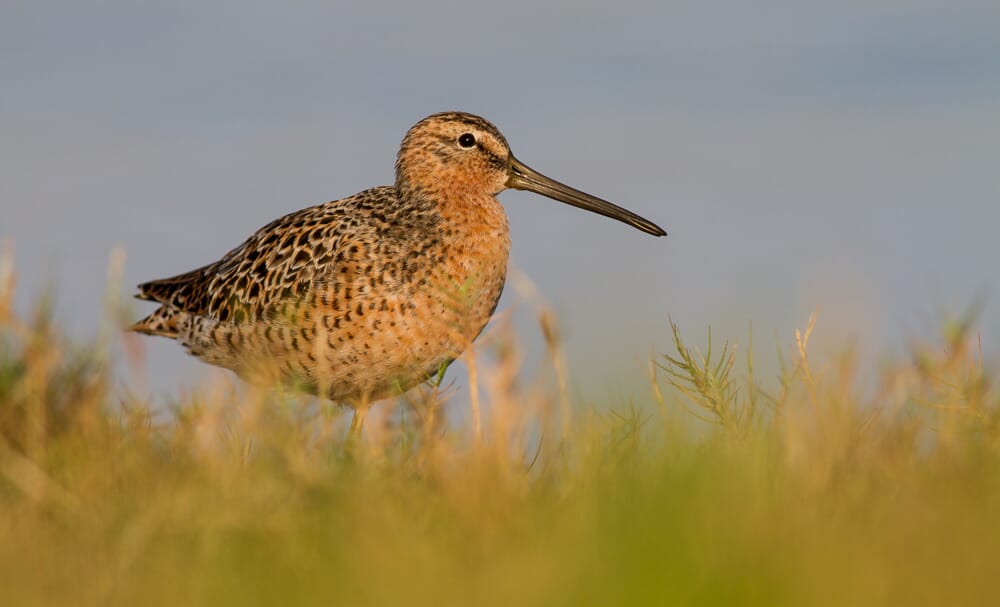
In this article, I’m going to tell you everything you need to know about Shutter Priority so that you can confidently use it the next time you go out with your camera. You’ll discover when, where, and how to use Shutter Priority–so you can consistently come away with beautiful photos.
Shutter Priority Mode:
Shutter Priority: Key Takeaways
- Shutter Priority mode lets you select the shutter speed and ISO while your camera selects the aperture
- Use Shutter Priority mode when you need a specific shutter speed to freeze motion
- Use Shutter Priority mode when you’re after a slow shutter speed for motion blur
- Avoid Shutter Priority when you require a specific aperture for creative effects
- Once in Shutter Priority mode, you can use exposure compensation to correct exposure errors
What Is Shutter Priority Mode?
Shutter Priority mode is a semi-automatic exposure mode on your digital camera.
In other words:
You select some settings, and your camera does the rest.
The point of semi-automatic exposure modes is to ensure that you can pick the settings that matter to you, while your camera will fill in the blanks with the settings that will produce a perfect exposure.
(By perfect exposure, I’m referring to a shot that’s not too light, not too dark, but just right. A photo that is full of detail, like the one below. Make sense?)
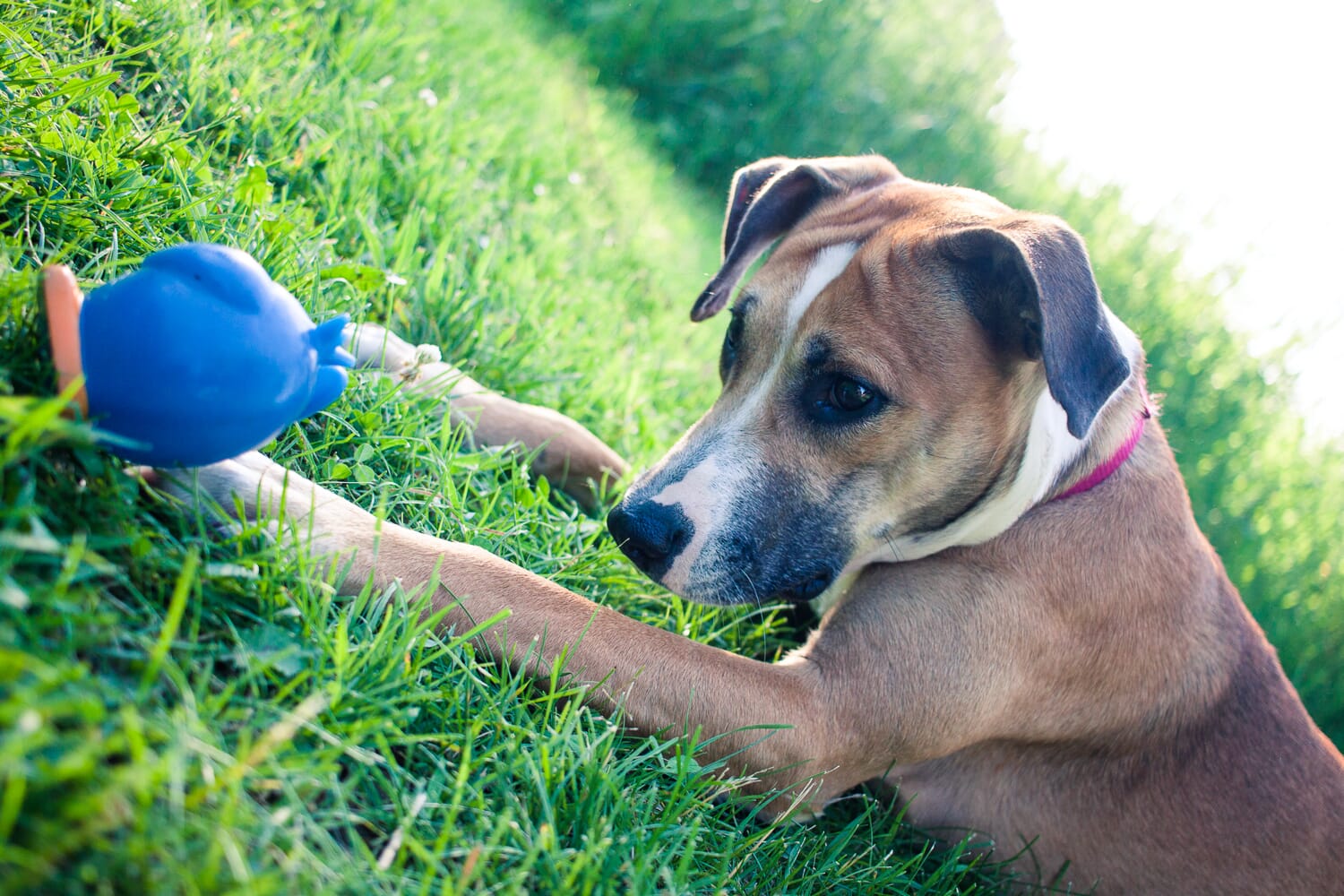
Now, Shutter Priority mode allows you to select the shutter speed.
So you can decide if you want a fast shutter speed, such as 1/2000s, a slow shutter speed, such as 1/2s, or a mid-level shutter speed, such as 1/200s.
While I’ll talk more about selecting a shutter speed in the next section, you should recognize that fast shutter speeds are much better at freezing action, whereas slow shutter speeds will result in both motion blur and blur due to camera shake.
This shot was taken with a slow shutter speed:
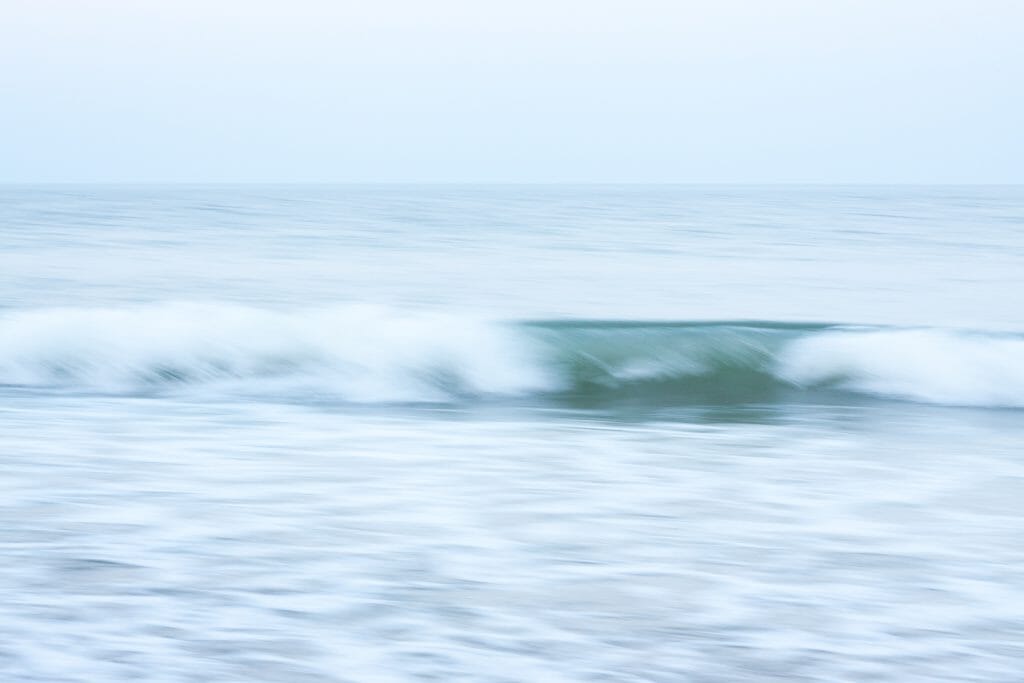
But faster shutter speeds will also result in darker photos, because they let in less light than slow shutter speeds.
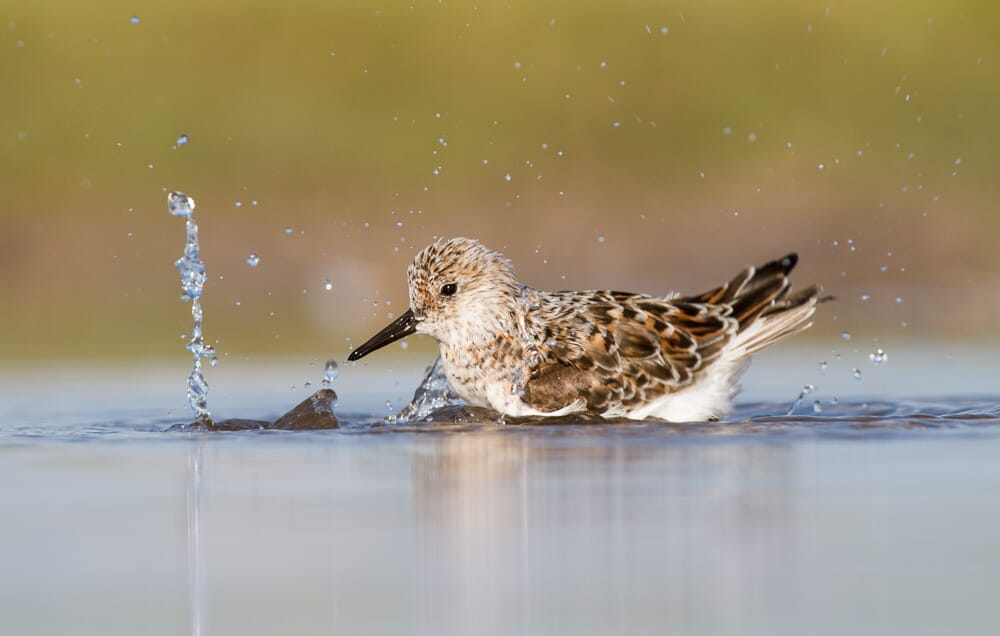
If you were shooting in full manual mode, every time you increase the shutter speed, you need to widen the aperture in order to compensate for the loss of light.
Except…
If you shoot using Shutter Priority, your camera will do this for you.
So you set the camera to Shutter Priority.
Then you dial in your desired shutter speed.
And your camera will choose the perfect aperture for the situation, resulting in a photo that’s well-exposed and sits at your desired shutter speed.
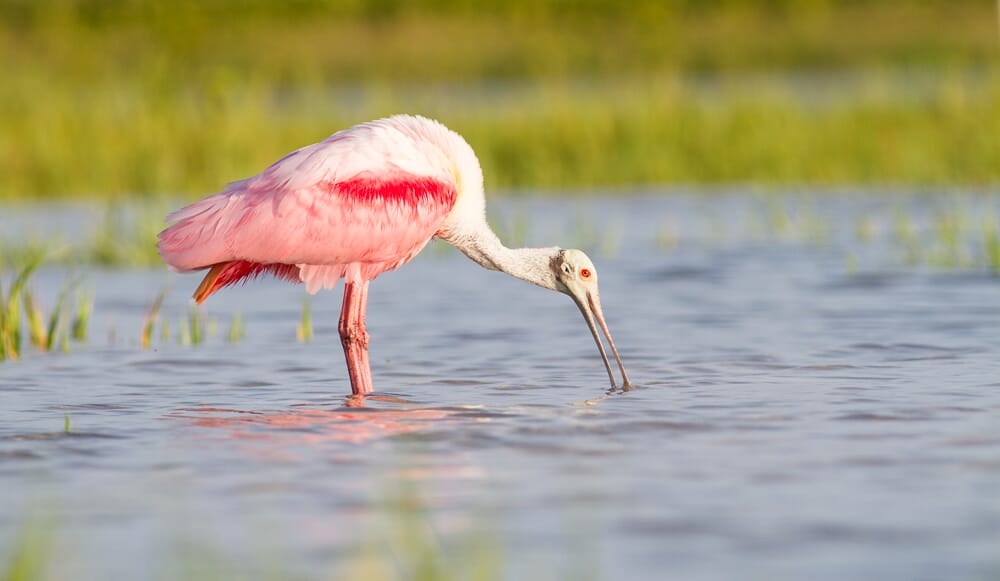
(Note that you’re free to choose your ISO, as well, or you can set it to Auto ISO.)
That’s the power of Shutter Priority. You choose the shutter speed, your camera does the rest.
But how do you pick the right shutter speed for each situation?
Choosing the Right Shutter Speed: Some Quick Tips
Choosing a shutter speed to dial in can seem like a challenge.
After all, you can often choose a shutter speed from 30s to 1/6400s or anywhere in between.
Fortunately, there are a few basic guidelines you can use to consistently choose the right shutter speed.

First, you should always use a shutter speed that’s shorter than the reciprocal of your lens’s focal length.
In other words, if you’re shooting with a 300mm lens, you should use a shutter speed of at least 1/300s.
If you’re shooting with a 50mm lens, you should use a shutter speed of at least 1/50s.
Make sense?
This simple ‘reciprocal rule’ will prevent you from ruining your shots with too much camera shake.
Second, if you’re shooting a slow-moving subject, such as a person walking, you’ll want to use a shutter speed of at least 1/500s. This will freeze the action, but won’t cost too much in terms of required light.
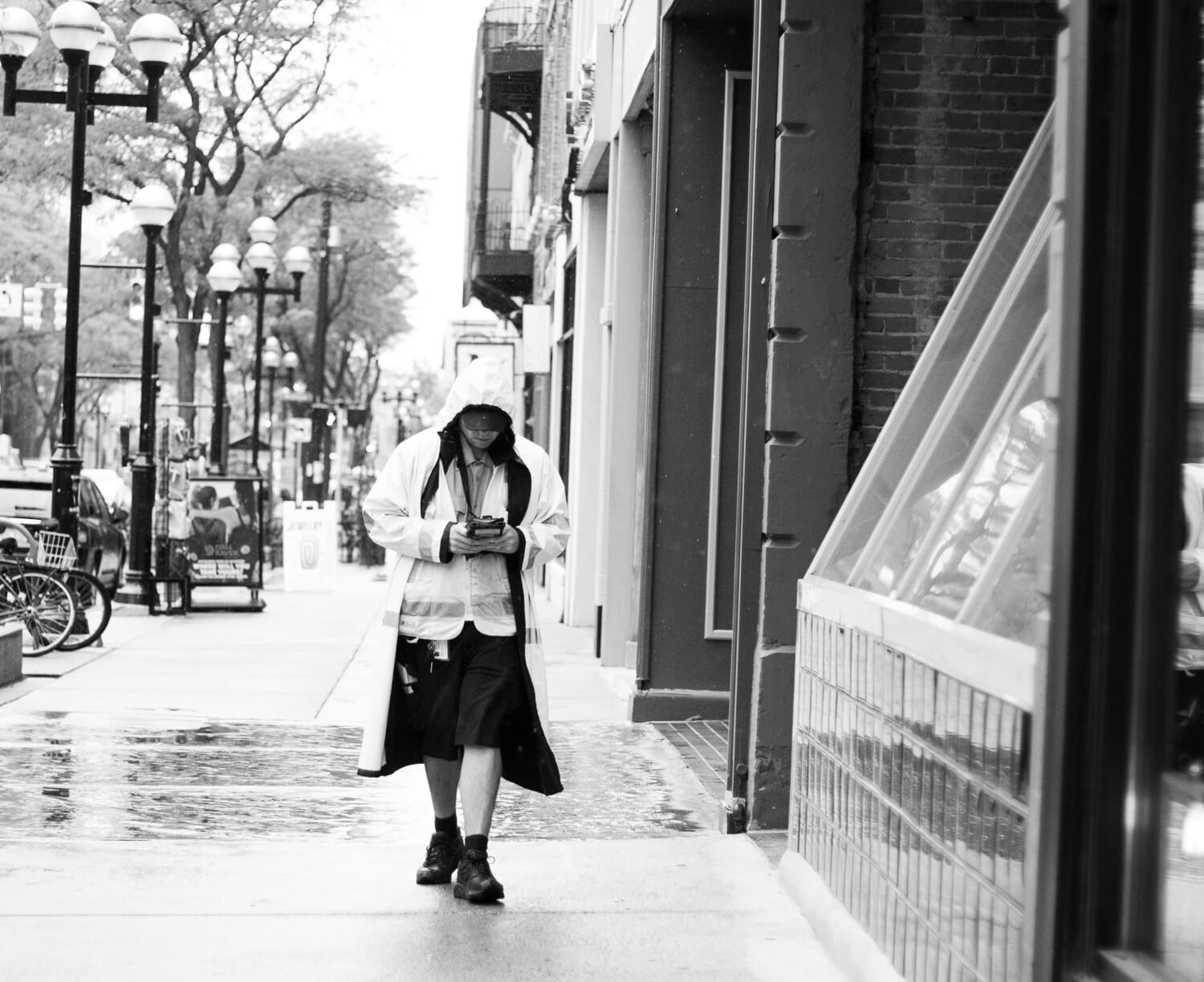
Third, if you’re shooting a faster-moving subject, 1/1000s is better. I’m talking about situations where you’re photographing joggers, bikers, and playing dogs.

Fourth, if you’re shooting an ultra-fast subject, such as a bird in flight, 1/2000s, 1/3200s, or even 1/4000s is a good option, though it’s hard to know what works without experimenting.
Which, by the way, is the final guideline for working with Shutter Priority:
You don’t always need to know exactly what shutter speed to pick from the start. It’s okay to experiment. It’s okay to test out different options.
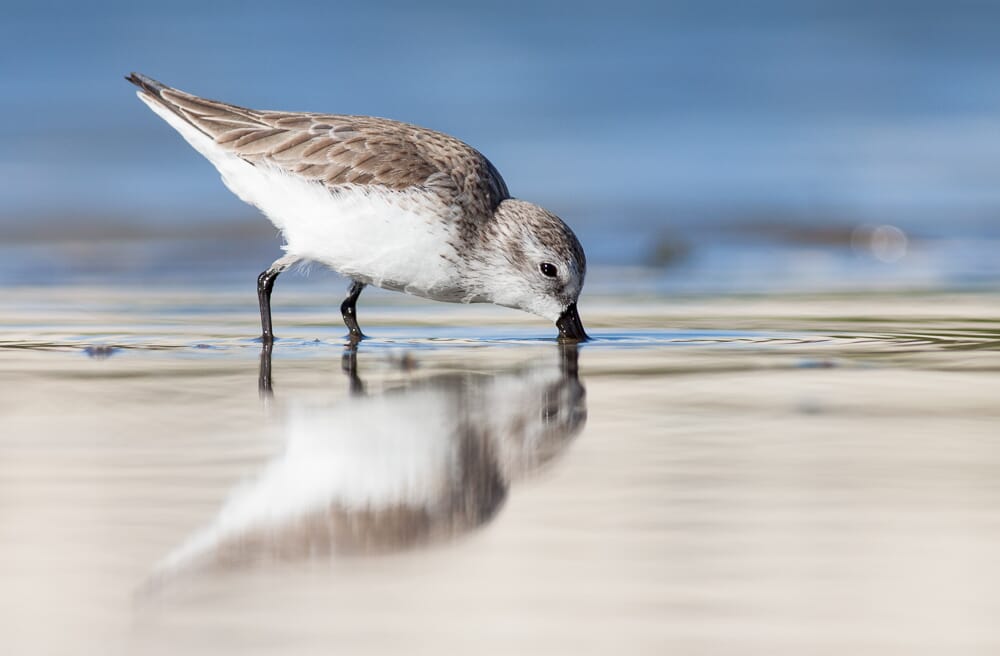
How to Activate Shutter Priority Mode on Your Camera
Fortunately, it’s very easy to activate Shutter Priority mode.
Simply look at the dial on the top of your camera.
Then spin the dial to the Shutter Priority icon, which may be indicated with Tv or an S.
Now you’ll be able to use the other camera dials to set your shutter speed!
2 Situations Where Shutter Priority Will Help You
Now that you know all about Shutter Priority mode and how it works, it’s time to look at situations where you’ll benefit from Shutter Priority mode:
When You Need to Use a Specific Speed to Freeze Motion
If you’re shooting a subject that absolutely requires a certain shutter speed, Shutter Priority mode is a good way of guaranteeing you get what you want.
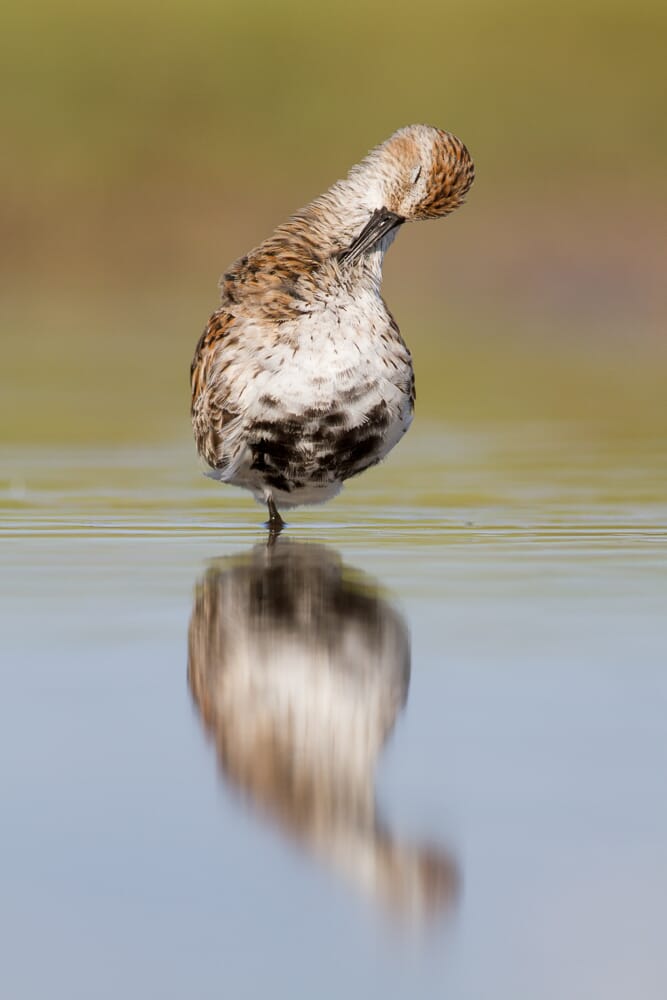
So if you’re shooting a bird in flight that requires 1/4000s, just dial in the 1/4000s shutter speed and let your camera do the rest.
If you’re shooting a bike in motion that requires 1/1000s, just dial in the 1/1000s shutter speed and let your camera choose the aperture.
Assuming you have enough light, the camera will do an excellent job selecting the proper aperture, and you’ll get a tack-sharp photo.

When You’d Like to Capture Creative, Slow Shutter Speed Photos
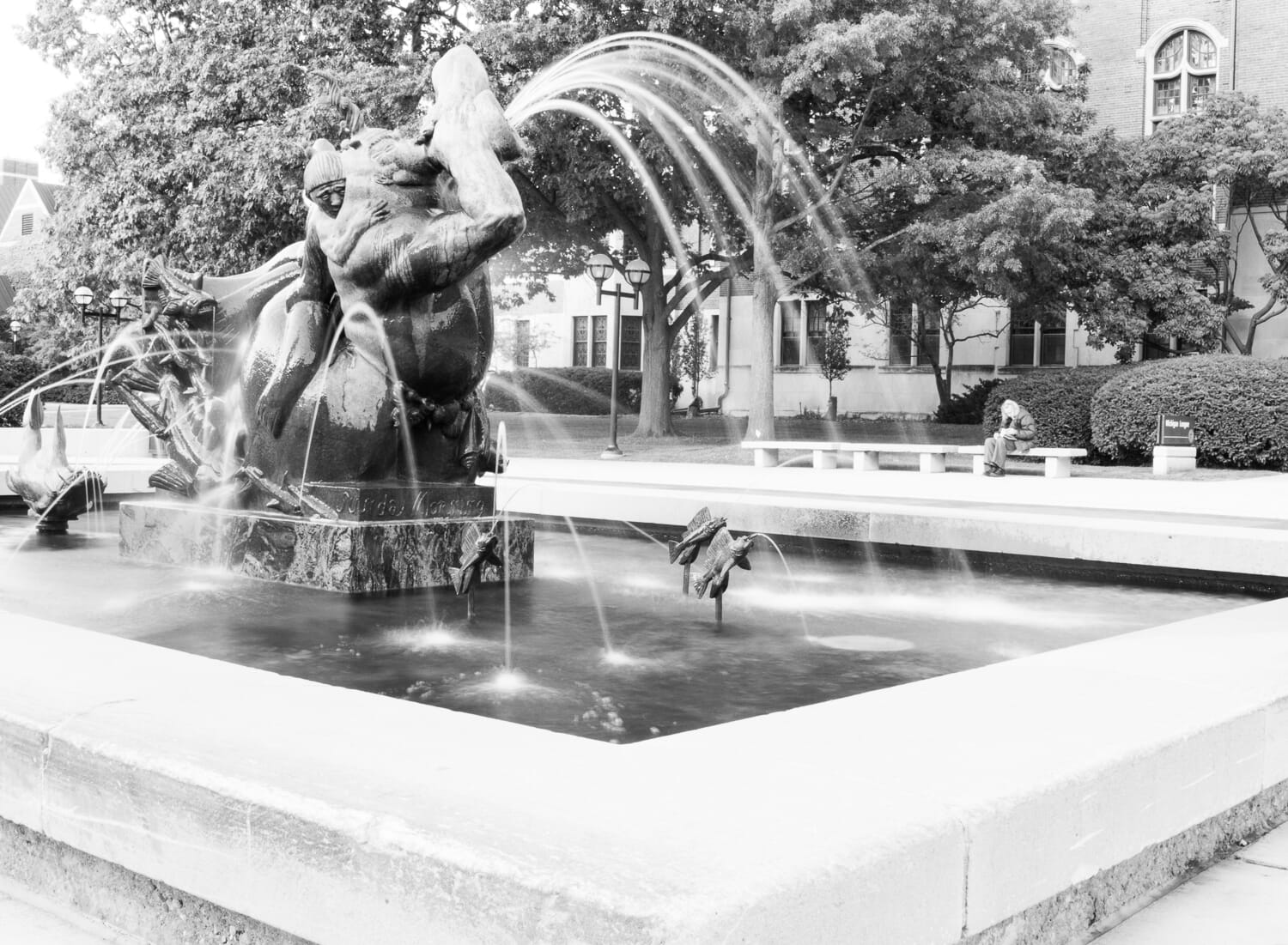
Another reason to use Shutter Priority is if you’re in need of a slow shutter speed.
For instance, you may want to use a shutter speed of around 1/30s to capture a pleasing blur of an animal in motion.
Or you may want to use a shutter speed of 1/10s to shoot some interesting intentional motion abstracts.
You may even want to slow down the shutter speed to 1s or more to photograph moving water:
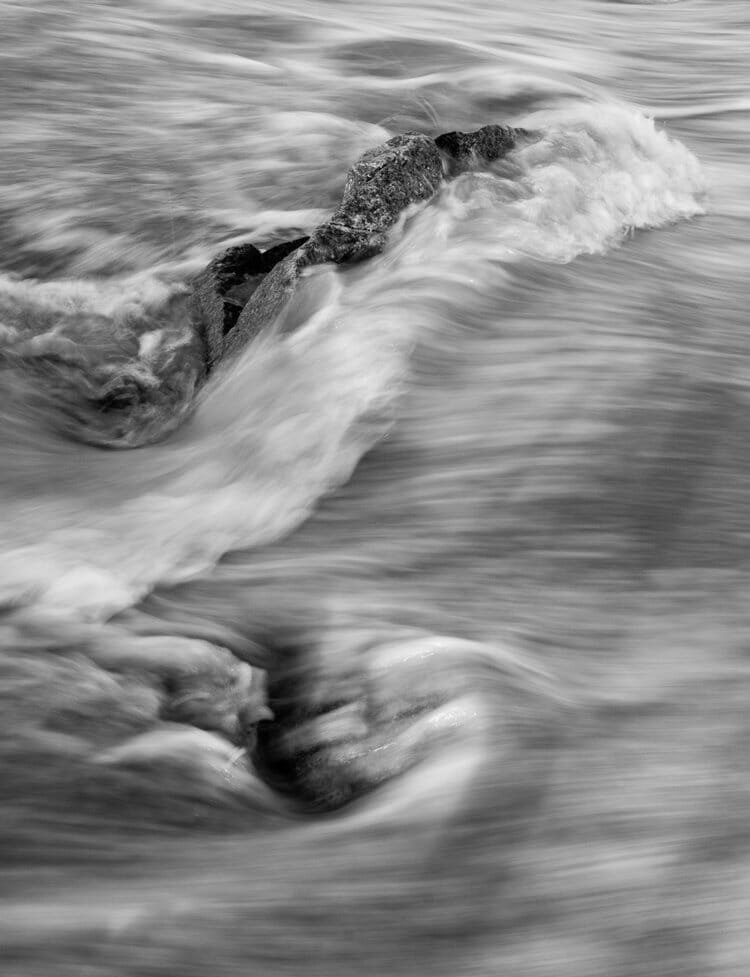
In these cases, you’ll need to carefully choose a shutter speed–but the aperture isn’t important. So you can dial in the relevant speed and wait for the camera to choose the aperture.
2 Situations Where You Should Avoid Shutter Priority Mode
While Shutter Priority mode can be extremely helpful in a lot of situations, there are times when it’s better work in Manual mode or Aperture Priority mode instead:
When the Depth of Field Matters
If you’re photographing a landscape and require a very specific depth of field–e.g., f/16–then Shutter Priority isn’t the way to go.

Because you want to be able to control your aperture to produce the perfect depth of field. That’s not something you want your camera to mess with.
So if the depth of field is key, avoid Shutter Priority. Instead, shoot with Aperture Priority, which will let you pick your aperture (while your camera will deal with the shutter speed), or Manual mode, which allows you to choose both your shutter speed and your aperture.
Also Read: Shallow vs Deep Depth of Field

When the Light is Low
If you’re shooting in a low-light situation, I recommend you avoid Shutter Priority.

Here’s why:
When the light gets low, you’ll have to make careful decisions about whether you want to sacrifice shutter speed, aperture, or ISO.
But if you use Shutter Priority, your camera will make these decisions for you, taking away your ability to make the best possible compromise. Plus, you may choose a shutter speed that cannot be compensated for by the camera’s aperture selection (after all, the maximum aperture only goes so wide!), and you’ll end up with an underexposed photo anyway.
Therefore, I recommend you shoot in Manual mode when working in low light. It’s a bit more complex, but it’ll help you keep your photography looking well exposed, even in the toughest of situations.
This shot required Manual mode, because the light was fairly low (and I needed an aperture narrow enough to keep all three pelicans sharp):

Shutter Priority Mode and Exposure Compensation
There’s one more thing you should know about Shutter Priority mode:
While your camera generally does a good job of picking the best aperture for the situation, sometimes it fails.
This is because not all scenes are neutral-toned. If you photograph a snow scene, your camera will think it’s too bright and darken it as a consequence. If you photograph a dark interior, your camera will think it’s too dark and brighten it as a consequence.
Here’s a shot that had a lot of bright content, so the camera underexposed it as a result:
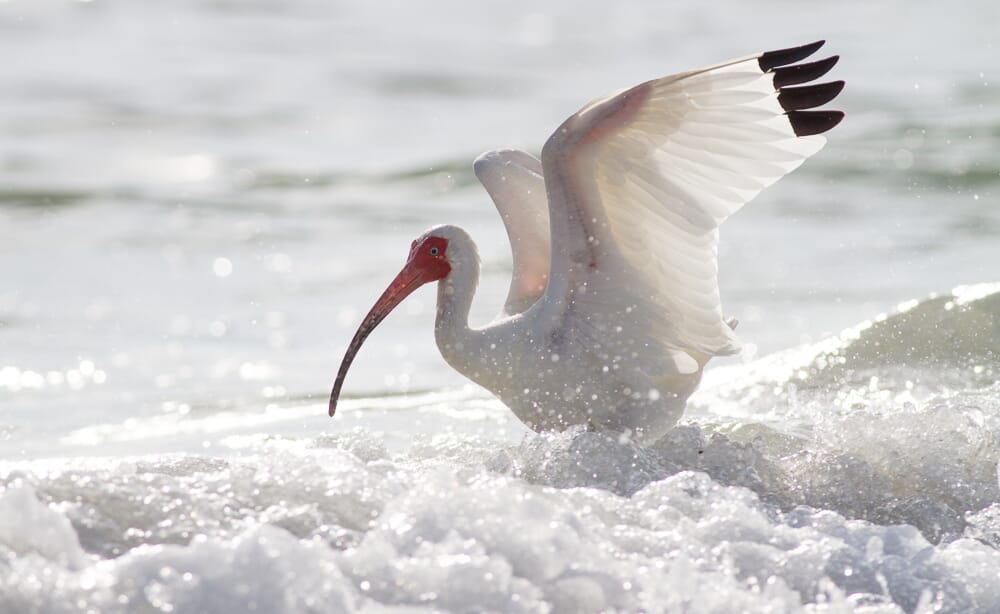
In other words, you’ll end up with an underexposed or an overexposed photo, all because the camera’s meter got it wrong.
Now, the camera’s meter does a fine job when dealing with neutral scenes. And it can also do a pretty good job in more complex situations, depending on your particular camera and its metering algorithms.
But you’ll sometimes run into scenes where the camera just doesn’t get it right, which is when exposure compensation becomes necessary.
Exposure compensation allows you to tell your camera to lighten or darken the exposure slightly, in order to compensate for exposure issues. It’s usually preset as a +/- icon, though you can sometimes activate exposure compensation just by twirling the back camera dial while in Shutter Priority mode.
If you set the exposure compensation in the positive direction (+), it’ll cause your camera to overexpose on purpose.
If you set the exposure compensation in the negative direction (–), it’ll cause your camera to underexpose on purpose.
It does this by decreasing or increasing its selected aperture, in order to let in more and less light, respectively.
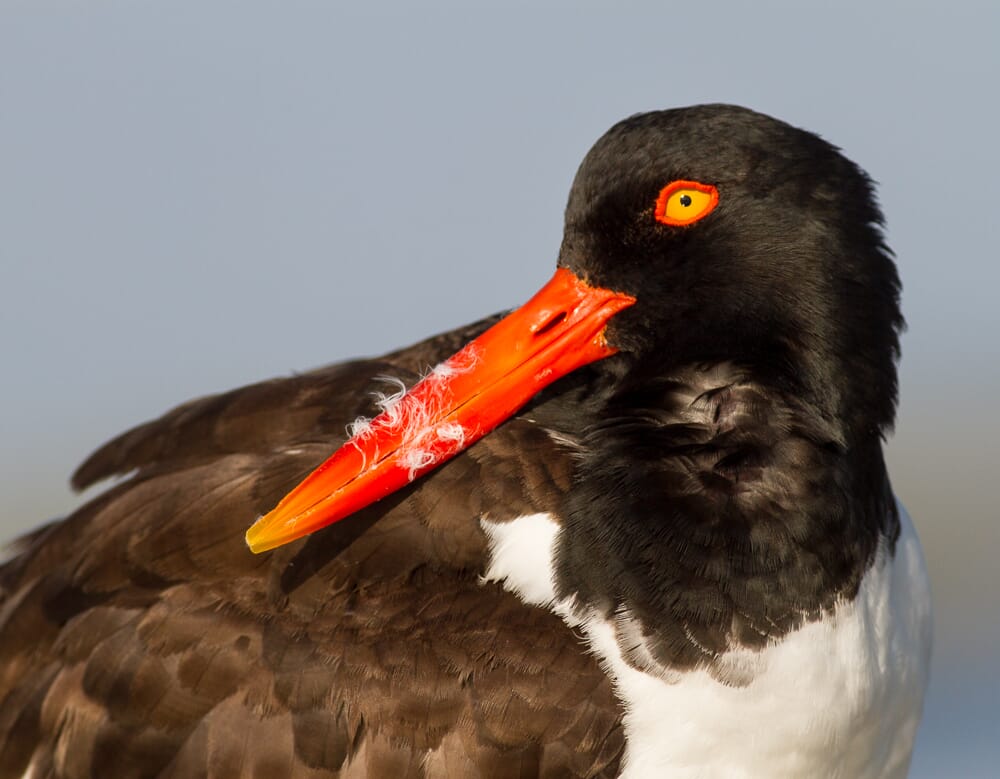
Here’s the bottom line:
You don’t need to be aware of which particular exposure compensation settings you’ll need to use before you set foot outside.
But you should be aware that you might need to use exposure compensation, and be ready to put it into action if the need arises.
That way, you can make sure you always get well-exposed photos.
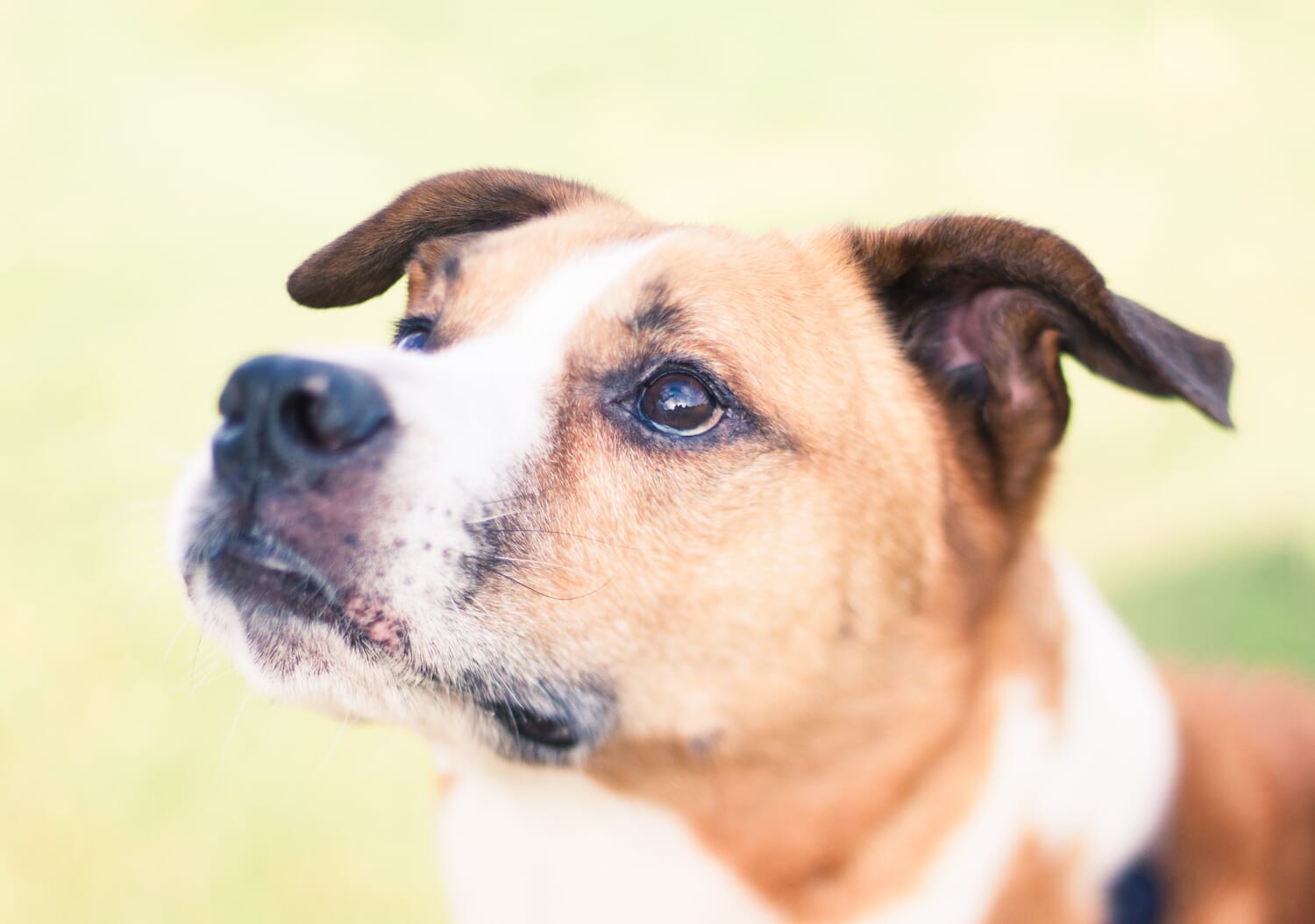
A Complete Guide to Shutter Priority Mode: Conclusion
Hopefully, you now feel like you can confidently use Shutter Priority mode.

The truth is that Shutter Priority isn’t difficult–it just takes a bit of getting used to.
But once you’ve taken some time to practice…
…you’ll be capturing brilliant photos in no time at all!
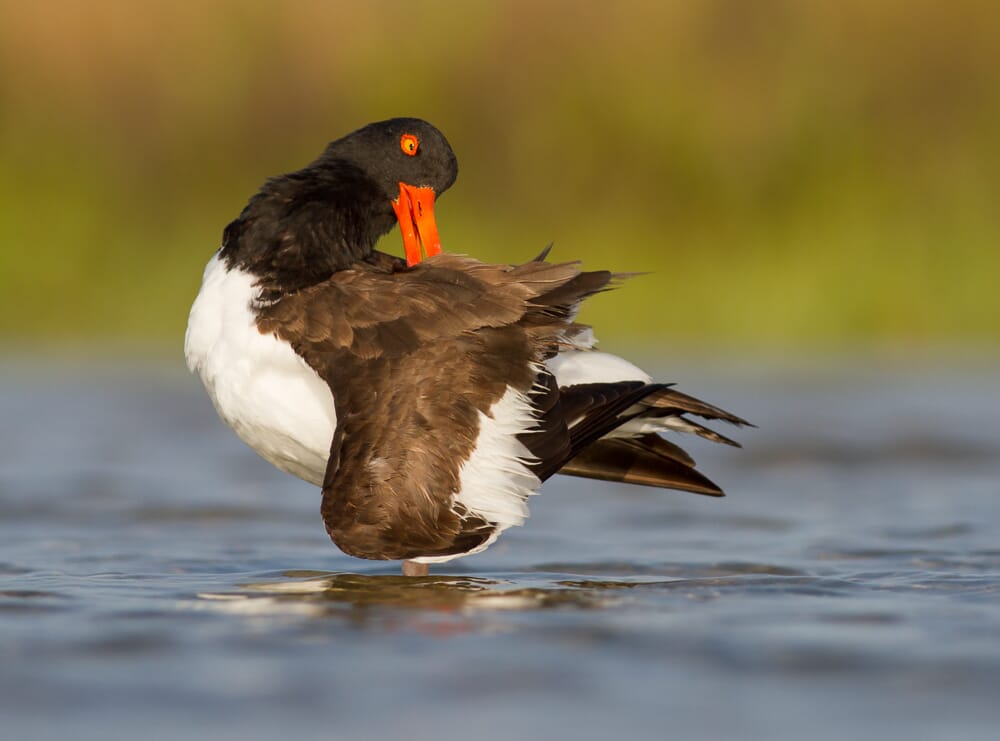
What is Shutter Priority mode?
Shutter Priority mode is a semi-automatic exposure mode. It allows you to capture well-exposed photos by choosing your preferred shutter speed and ISO, and letting the camera select the best aperture. Your camera generally does a good job of picking an aperture, but in cases where your photos are too dark or too bright, I recommend using exposure compensation to fix these issues.
When should you use Shutter Priority mode?
I recommend using Shutter Priority mode in two general situations. First, you should use Shutter Priority if you absolutely must shoot at a particular shutter speed, and have plenty of light to let your camera deal with the aperture. So if you’re shooting a bird in flight, you may require a shutter speed of 1/4000s. With Shutter Priority mode, you can dial in this setting, then let your camera select an aperture that will nail the exposure. That way, you don’t have to be concerned about getting the exposure wrong; instead, you can focus on the shutter speed and let your camera deal with the aperture. Second, I recommend you use Shutter Priority mode when you’re looking to do some creative photography. For instance, intentional camera movement (ICM) photography involves choosing a slow shutter speed, then moving the camera as you take a photo. This can create interesting abstract shots, but requires careful choice of shutter speed. You might also use Shutter Priority if you need to choose a particular slow shutter speed, such as when photographing blurred water.
When should you avoid Shutter Priority mode?
I recommend avoiding Shutter Priority mode when shooting in low light, because you’ll want to choose all of your settings as carefully as possible (in order to keep your ISO low and your shutter speed high). I also recommend avoiding Shutter Priority when the depth of field is important. If you need to shoot a scene at f/11 for maximum sharpness, then Shutter Priority can easily backfire, because it may select an aperture that is too wide and ruining the overall image. Instead, use Aperture Priority to dial in your desired aperture, or work in Manual mode for increased flexibility.
Does Shutter Priority mode get the exposure wrong?
Your camera’s Shutter Priority mode works based on the in-camera meter–which is generally accurate. However, there will be times that your camera gives you an exposure that’s too dark or too bright. In these situations, you’ll want to use your camera’s exposure compensation function, which allows you to dial in an exposure adjustment and ensures a well-exposed image.
Can I use Shutter Priority for low light photography?
I don’t recommend using Shutter Priority when shooting in low light, unless you’re capturing creative, slow-shutter photos. Instead, work in Manual mode, which gives you complete control over your exposure and allows you to carefully select the proper aperture, shutter speed, and ISO.
